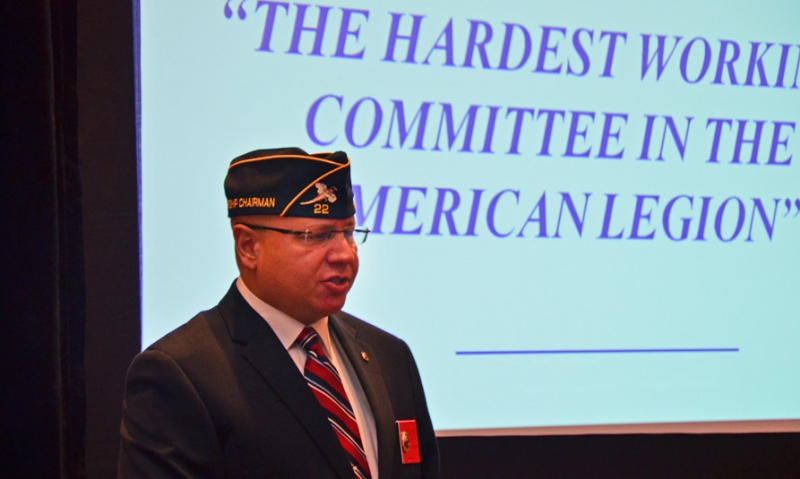
National Membership & Post Activities Committee re-evaluates the organization’s strategic plan to ensure a culture of growth is achieved.
Legionnaire Dale Barnett, consultant to The American Legion Legislative Commission, arrived at the Indianapolis Airport in preparation for the Legion’s National Membership & Post Activities (M&PA) Committee meeting wearing a Legion signature jacket. He was stopped by a Boys State alumnus who began asking Barnett about the Legion and its programs.
“He stopped me because there was something that was relevant about our organization to him,” Barnett said. “If this organization is going to be relevant in the years to come, we have to have a plan.”
That plan, the Legion’s five-year strategic plan for sustained membership growth, was discussed Jan. 10 during the annual M&PA meeting. The committee re-evaluated the viability of each tactic within the strategic plan to ensure the plan’s overall mission of building and sustaining a culture of growth is achieved.
“There was a time when you said the words ‘American Legion’ and people knew exactly who we were and what we stood for,” said M&PA Chairman Kenneth Orrock. “When we look at brand awareness in the five-year plan, at what point in time did we as an organization surrender our position as the dominant voice of the American veteran? We cannot serve our communities, our nation and our fellow veterans without a robust membership program.
“We have to integrate membership and membership recruitment into everything that we do. Everything we do is an invitation to talk to eligible veterans about this organization and what they can do to join.”
While addressing each of the tactics under the five priorities in the strategic plan, the committee found tactics that need further development, such as membership recruitment incentives. They also found tactics that need to be reiterated back to departments to develop and maintain, such as a media relations team, a membership training team and outreach efforts to active-duty servicemembers.
Orrock shared with the committee that when he was on active duty and stationed overseas, he received a membership recruitment letter from a veterans service organization that was not the Legion. “I cannot remember any time during my active-duty career that I was ever solicited for membership by The American Legion,” he said. “My vision and goal is that membership in The American Legion goes across the lifespan of the active-duty military member. That contact with them be made at their first training or duty station and that we continue to engage them into the American Legion throughout their active-duty service, showing how we can be advocates on their behalf.”
The committee also shared best practices that their respective departments have implemented as part of their five-year membership plan – for example, appointing a Direct Mail Solicitation (DMS) chairman to help monitor the DMS list on mylegion.org and to help with post and district revitalization efforts, as well as soliciting membership to veterans who received VA claims assistance from an American Legion-accredited service officer. American Legion Membership Director Billy Johnson said that in 2013, the first year of the five-year strategic plan, 747 post revitalization efforts were conducted, compared to 421 in 2012.
Enhancements to the five-year plan will be disseminated to all departments by their M&PA Committee liaison; departments will be notified shortly who their liaison is. Each committee member will act as the subject matter expert on their assigned departments, will know the status of their department’s five-year plan and what help it may need, and will relay information from M&PA meetings to the departments, as well as provide feedback from the field.
“When it comes to improving the five-year plan, I have the expectation that (M&PA Committee members) are going to be the biggest cheerleaders to our membership,” Orrock said. “We are going to be the ones pumping those grassroots Legionnaires up, telling them how important their job is, how important membership is and how important supporting this plan is.
“Because at the end of five years, we don’t stop working membership. We don’t stop growing this organization. The five-year plan is our guide as we work our way through building and a sustaining a culture of growth.”
Orrock also reflected back on Barnett’s story of the relevancy the Legion emblem has in creating brand awareness and attracting new members.
“When I wear the Legion symbol, whether it’s on a shirt or cap, it’s an invitation for veterans to speak to me,” he said. “It’s an invitation to those who want more information about this organization, and I think it’s so important that we show this proud symbol and make that invitation for veterans to talk to us about this organization whether they join us or not.”
- Membership

